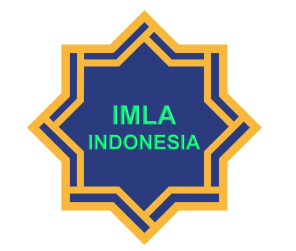Dawr Tajribat "Bandongan” al-Taʿlīmīyah fī al-Qudrah ʿalá Tarjamat al-Mubtada’ wa-al-Khabar min Wajhat Naẓar Ṭalabat Qism Taʿlīm al-Lughah al-ʿArabīyah
DOI:
https://doi.org/10.21580/alsina.6.2.23367Keywords:
Arabic education students, Arabic grammar, bandongan learning experience, mubtada and khabar, translation skillsAbstract
This study examines the impact of the bandongan method, utilizing Pegon Arabic translation, on students’ ability to translate mubtada’-khabar structures in medieval Islamic texts. Employing a mixed-method approach, the research involved 26 students from the class of 3B of the Arabic Language Education Study Program at Universitas Islam Negeri Walisongo Semarang. We collected data using questionnaires, tests, and observations. The questionnaire assessed experience and methods, while the test evaluated translation skills. Results indicate that 100% of students have Yellow Book (classical Islamic texts) experience, with 61,5% using bandongan, and 75% achieving high translation scores. However, 69,2% reported recitation difficulties, and 36,4% erred in identifying mubtada’-khabar. These findings suggest bandongan supports initial skills but may be limited by syntactic and non-linguistic challenges, such as Pegon adaptation for non-Javanese students. The study concludes that integrating bandongan with structured syntactic training could enhance outcomes, though further research with larger samples is recommended.
Downloads
References
Abdel‐Malek, Myriam. “Writing Recounts of Habitual Events: Investigating a Genre‐based Approach.” Foreign Language Annals 52, no. 2 (2019): 373–87. https://doi.org/10.1111/flan.12383.
Abdellah, Antar. “Translation Pedagogy the Missing Component in Translation Studies in the Arab World.” International Journal of Research in Educational Sciences 4, no. 1 (2021): 87–108. https://doi.org/10.29009/ijres.4.1.2.
Ajizah, Ratna Utami Nur, and Irfan Jauhari. “Contextualization of Arabic Language Learning in the Framework of Religious Moderation in the Contemporary Era on the MTs Negeri 1 Ponorogo.” Mahira 3, no. 2 (2023): 103–14. https://doi.org/10.55380/mahira.v3i2.541.
Akbari, Muhammad Yudo Agresi. “Arabic Error Analysis.” In Proceedings of the 1st International Conference on Intellectuals’ Global Responsibility (ICIGR 2017), 168–71. Paris: Atlantis Press, 2018. https://doi.org/10.2991/icigr-17.2018.41.
Amalia, Siti et al. “Taḥlīl Mushkilāt al-Ṭullāb fī Tarjamat al-Lughah al-‘Arabīyah ilá al-Lughah al-Indūnīsīyah fī al-Ṣaff al-Thāmin lil-Madrasah al-Thānawīyah al-Ḥukūmīyah 3 Bangka.” Edugama: Jurnal Kependidikan dan Sosial Keagamaan 8, no. 1 (2022): 39–56. https://doi.org/10.32923/edugama.v8i1.2465.
Anis, Muhammad Yunus et al. “The Information Structure in Arabic-Javanese Translation: Case Study in the Book of Bidayah Al-Hidayah.” ADDIN 11, no. 2 (2017): 463–84. https://doi.org/10.21043/addin.v11i2.2317.
Atabik, Atabik et al. “Life Skills Approach in Arabic Language Learning at Islamic Boarding School-Based Madrasah Aliyah.” Al-Hayat: Journal of Islamic Education 7, no. 2 (2023): 327–42. https://doi.org/10.35723/ajie.v7i2.378.
Creswell, J W, and V L P Clark. Designing and Conducting Mixed Methods Research. SAGE Publications, 2017.
Creswell, John W., and Cheryl N. Poth. Qualitative Inquiry & Research Design: Choosing Among Five Approaches. Thousand Oaks, CA: SAGE Publications, Inc., 2018.
Ḥasan, Abbās. Al-Naḥw Al-Wāfī. Kairo: Dār al-Ma’ārif, 2018.
Hidayah, Bashirotul. “Peningkatan Kemampuan Membaca Kitab Kuning Melalui Pembelajaran Arab Pegon.” Muróbbî: Jurnal Ilmu Pendidikan 3, no. 1 (2019): 102–19. https://doi.org/10.52431/murobbi.v3i1.194.
Hunt, Neil D. “Managing Method: A Critical Inquiry into Language Policy in a Tertiary Institution in the United Arab Emirates.” RELC Journal 43, no. 3 (2012): 295–311. https://doi.org/10.1177/0033688212463295.
Ibn Hishām, ʻAbd Allāh Ibn Yūsuf. Awḍaḥ al-Masālik ilá Alfīyat Ibn Mālik. Beirut: Al-Maktabah al-ʻAṣrīyah, 2005.
Ibn ʿAqīl, Bahāʾ al-DīnʿAbd Allāh ibn ʿAbd al-Raḥmān al-ʻAqīlī al-Hamadānī al-Miṣrī, and Muḥammad Muḥyī al-Dīn ʻAbd Al-Ḥamīd. Sharḥ Ibn ʻAqīl ʻalá Alfiyat ibn Mālik wa-maʿahu Kitāb Minḥat al-Jalīl bi-Taḥqīq Sharḥ Ibn ʿAqīl. 20th ed. Cairo: Dār al-Turāth, 1980.
Kaharuddin, Andi. “The Communicative Grammar Translation Method: A Practical Method to Teach Communication Skills of English.” ETERNAL (English, Teaching, Learning, and Research Journal) 4, no. 2 (2018): 232–54. https://doi.org/10.24252/Eternal.V42.2018.A8.
Kamal, Faisal. “Model Pembelajaran Sorogan dan Bandongan.” Paramurobi: Jurnal Pendidikan Agama Islam 3, no. 2 (2020): 15–26. https://doi.org/10.32699/paramurobi.v3i2.1572.
Kamalie, Saifullah. “Masalah Penerjemahan Kolokasi dalam Tafsir Fi Zilal al-Qur’an.” TSAQAFAH 9, no. 1 (2013): 171–202. https://doi.org/10.21111/tsaqafah.v9i1.45.
Makin, Muhammad. “Ta‘līm Al-Lughah Al-‘Arabiyyah Fī Al-‘Ālam: Turkīyā Namudhajan.” Adab Al-Rafidain 52, no. 90.1 (2022): 129–59. https://doi.org/10.33899/radab.2022.176047.
Masrukhi, Moh. “Penerjemahan Arab-Jawa Tradisi Pesantren pada Karya Kitab-Kitab Klasik: Analisis Fungsi.” SASDAYA: Gadjah Mada Journal of Humanities 2, no. 1 (2017): 283–301. https://doi.org/10.22146/sasdayajournal.31744.
Munip, Abdul. “Tracing the History of the Arabic-Javanese Language Translation Books in Nusantara Islamic Education.” Jurnal Pendidikan Islam 5, no. 1 (2016): 43–67. https://doi.org/10.14421/jpi.2016.51.43-67.
Muntaha, Farid Khoirul, and Muhammad Muchlish Huda. “Bentuk Fi’il, Fa’il dan Mubtada’khabar dalam Qashidah Al-Burdah Bait 1 Sampai 58.” Jurnal Pendidikan El Wahdah 2, no. 2 (2021): 93–111. https://doi.org/10.35888/elwahdah.v2i2.4629.
Murtadlo, Muhamad. “Three Writers of Arabic Texts in Yogyakarta.” Heritage of Nusantara: International Journal of Religious Literature and Heritage 3, no. 1 (2015): 107–28. https://doi.org/10.31291/hn.v3i1.22.
Nassif, Lama, and Shawna Shapiro. “Sociolinguistic Awareness in L2 Arabic: A Study of Learners’ Code Use Repertoires.” Foreign Language Annals 56, no. 4 (2023): 1013–34. https://doi.org/10.1111/flan.12715.
Nasution, Nur Padilah. “Nahwu Learning at Darul Ikhlas Islamic Boarding School Mandailing Natal.” Lisaanuna Ta`lim Al-Lughah Al-Arabiyah: Jurnal Pendidikan Bahasa Arab 5, no. 1 (2022): 70–83. https://doi.org/10.15548/lisaanuna.v5i1.3837.
Prihartini, Yogia, and Nur Hasnah. “Istikhdāmu al Kitābi “al Ta’līmi al Sarī’i ‘alā Kafā’ati al Ṭullābi li Fahmi Qawā’idi al Lughati al Arabiyyati bi al Madrasati al ‘Āliyati al Hukūmiyyati bi Jāmbī.” Al-Uslub: Journal of Arabic Linguistic and Literature 5, no. 2 (2021): 290–321. https://doi.org/10.30631/al-uslub.v5i02.110.
Putra, Wachid Solihuddin, and Mu’at Mu’at. “Istikhdām Kitāb al-Ājurūmīyah li-Ta‘līm al-Naḥw fī Bāb al-Mubtada’ wa-al-Khabar li-Ṭullāb al-Faṣl al-Ibtidā’ī fī Ma‘had al-Itqān Bendungrejo Jogoroto Jombang.” JURNAL AL-IHDA : Media Ilmiah Bahasa Arab 11, no. 2 (2023). https://doi.org/10.58645/alihda.v11i2.420.
Ramadlan, M. ‘Athif Audl, and Masngut Masngut. “Al-Mushkilāt fī al-Tamyīz bayna al-Tarkīb al-Iḍāfī wa-al-Tarkīb al-Naʿtī fī al-Qirā’ah li-Ṭalabat al-Jāmiʿah.” Alsina : Journal of Arabic Studies 4, no. 1 (2022): 1–22. https://doi.org/10.21580/alsina.4.1.4212.
Rizki, Restu Budiansyah. “Istirātījiyyat Qirā’at Kutub al-Turath ‘ala Asās Naẓariyyat Rebecca Oxford fī Ta‘allum al-Lughat al-Ajnabiyat.” Alsina : Journal of Arabic Studies 1, no. 1 (2019): 67–86. https://doi.org/10.21580/ALSINA.1.1.3725.
Sa’adah, Nailis. “Problematika Pembelajaran Nahwu Bagi Tingkat Pemula Menggunakan Arab Pegon.” Lisanan Arabiya: Jurnal Pendidikan Bahasa Arab2 3, no. 1 (2019): 15–32. https://doi.org/10.32699/liar.v3i01.995.
Tosimpak, Hasanuddin et al. “Taṭwīr Wasīlat Ta‘līm al-Lughah al-‘Arabīyah al-Tafā‘ulīyah ‘alā Asās al-Lu‘bah al-Ta‘līmīyah Quizizz fī Māddat al-Mubtada’ wa-al-Khabar li-Ṭullāb al-Ṣaff al-‘Āshir bi-al-Madrasah al-‘Ālīyah al-Ḥukumīyah Fālūfū.” AL IBRAH: Journal of Arabic Language Education 6, no. 2 (2023): 24–36. https://doi.org/10.24256/jale.v6i2.5112.
Ulfa, Maria. “Sistem Pengajaran Bahasa Arab Modern untuk Non-Arab.” An Nabighoh Jurnal Pendidikan dan Pembelajaran Bahasa Arab 20, no. 1 (2018): 63–78. https://doi.org/10.32332/an-nabighoh.v20i01.1128.
Downloads
Published
How to Cite
Issue
Section
License
Copyright (c) 2024 Alsina : Journal of Arabic Studies

This work is licensed under a Creative Commons Attribution-NonCommercial-ShareAlike 4.0 International License.
Copyright
The copyright of the received article shall be assigned to the publisher of the journal. The intended copyright includes the right to publish the article in various forms (including reprints). The journal maintains the publishing rights to published articles. Authors are allowed to use their articles for any legal purposes deemed necessary without written permission from the journal, but with an acknowledgment to this journal of initial publication.
Licensing
In order for Alsina: Journal of Arabic Studies to publish and distribute research articles, the editors need publishing rights (transferred from author to publisher). This agreement relates to the transfer/publishing copyright license to Alsina: Journal of Arabic Studies but the authors still have significant rights to use and share their published articles.
Alsina: Journal of Arabic Studies supports the need for writers to share, disseminate and maximize the impact of their research and their rights on any database. As a journal article writer, you have the right to various uses of your articles, including that by the institution or company where you work. Copyright can be used without the need for special permission. Authors who publish articles in the Alsina: Journal of Arabic Studies have broad rights to use their work for teaching and scientific purposes without requesting permission, including:
- Use by the author for lectures, presentations, or conferences, with distribution of copies to participants;
- Distribution to colleagues for research use;
- Use in compilations of the author's subsequent work;
- inclusion in a thesis or dissertation;
- Reuse of sections or excerpts from articles in other works (with full acknowledgment of the final article);
- Preparation of derivative works (other than commercial purposes) (with full acknowledgment of the final article);
- Voluntary posting on open websites operated by authors’ or writers' agencies for scientific purposes
When submitting a manuscript, authors do so on the understanding that if accepted for publication, the copyright for publishing (publishing right) of the article shall be assigned/transferred to Alsina: Journal of Arabic Studies.
Authors whose articles are accepted for publication will receive confirmation via email and sent a Copyright Transfer Agreement.

 Accreditation
Accreditation 
 In Collaboration with
In Collaboration with 

 Visitors
Visitors  Article Template
Article Template





